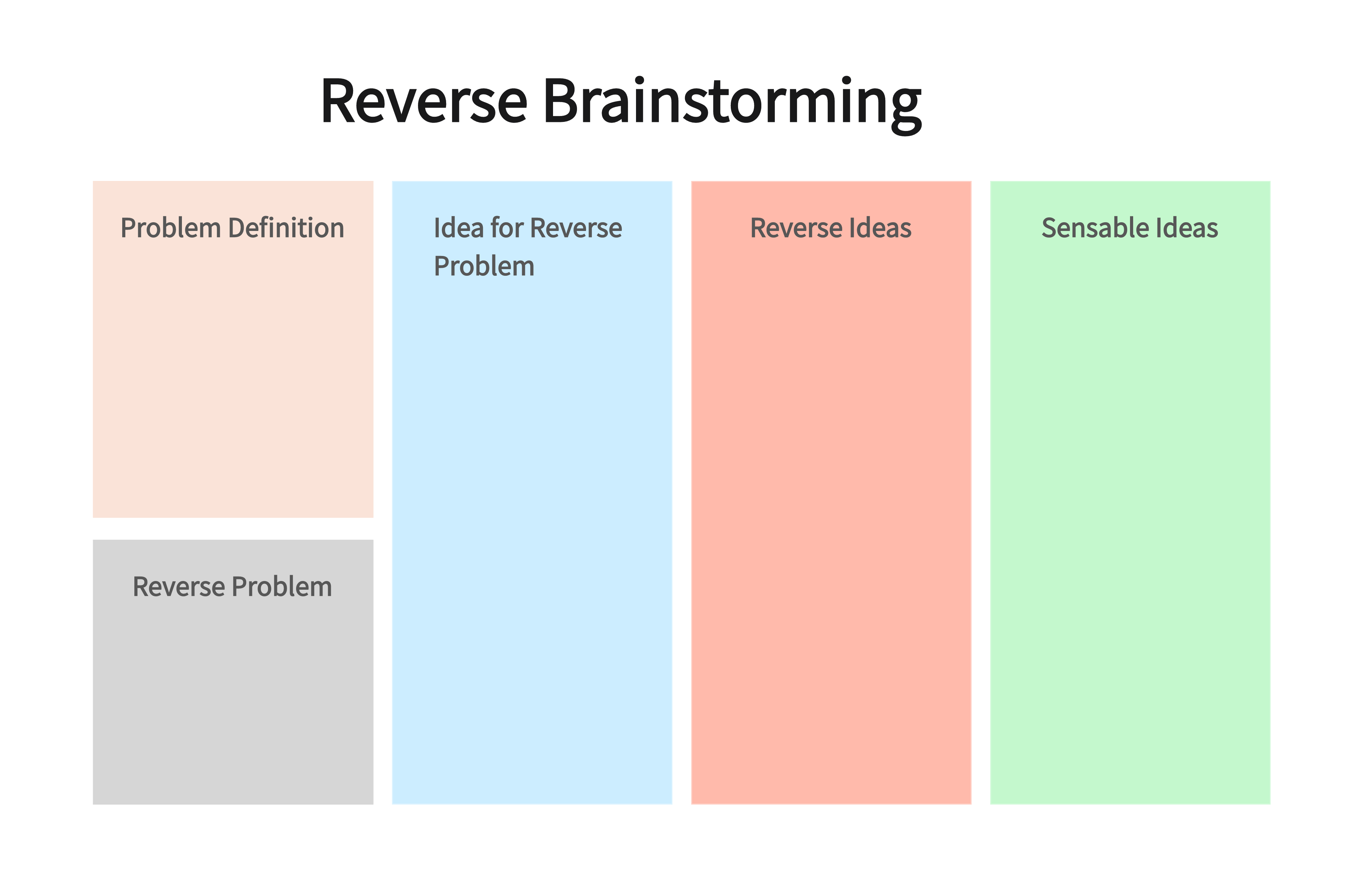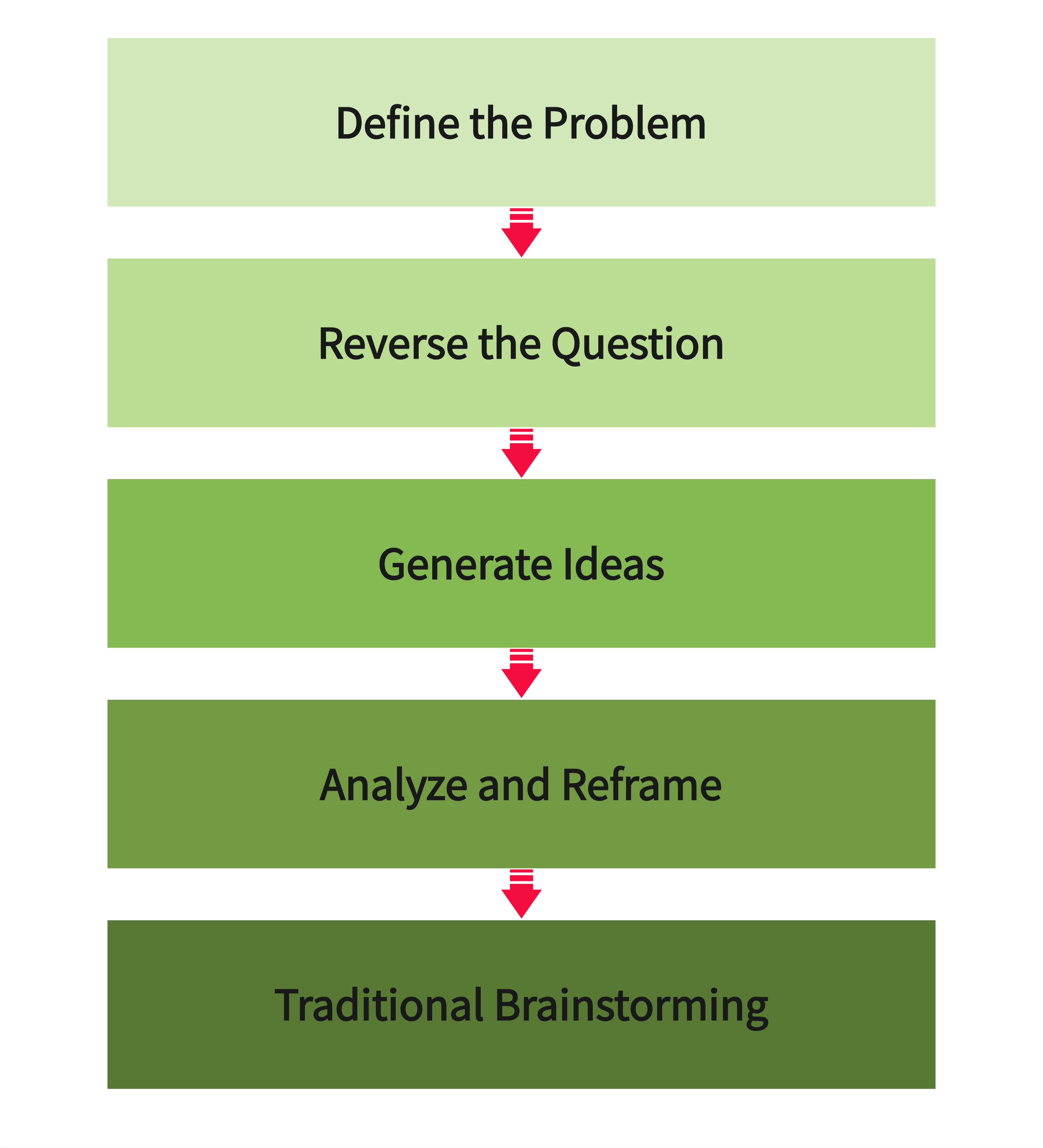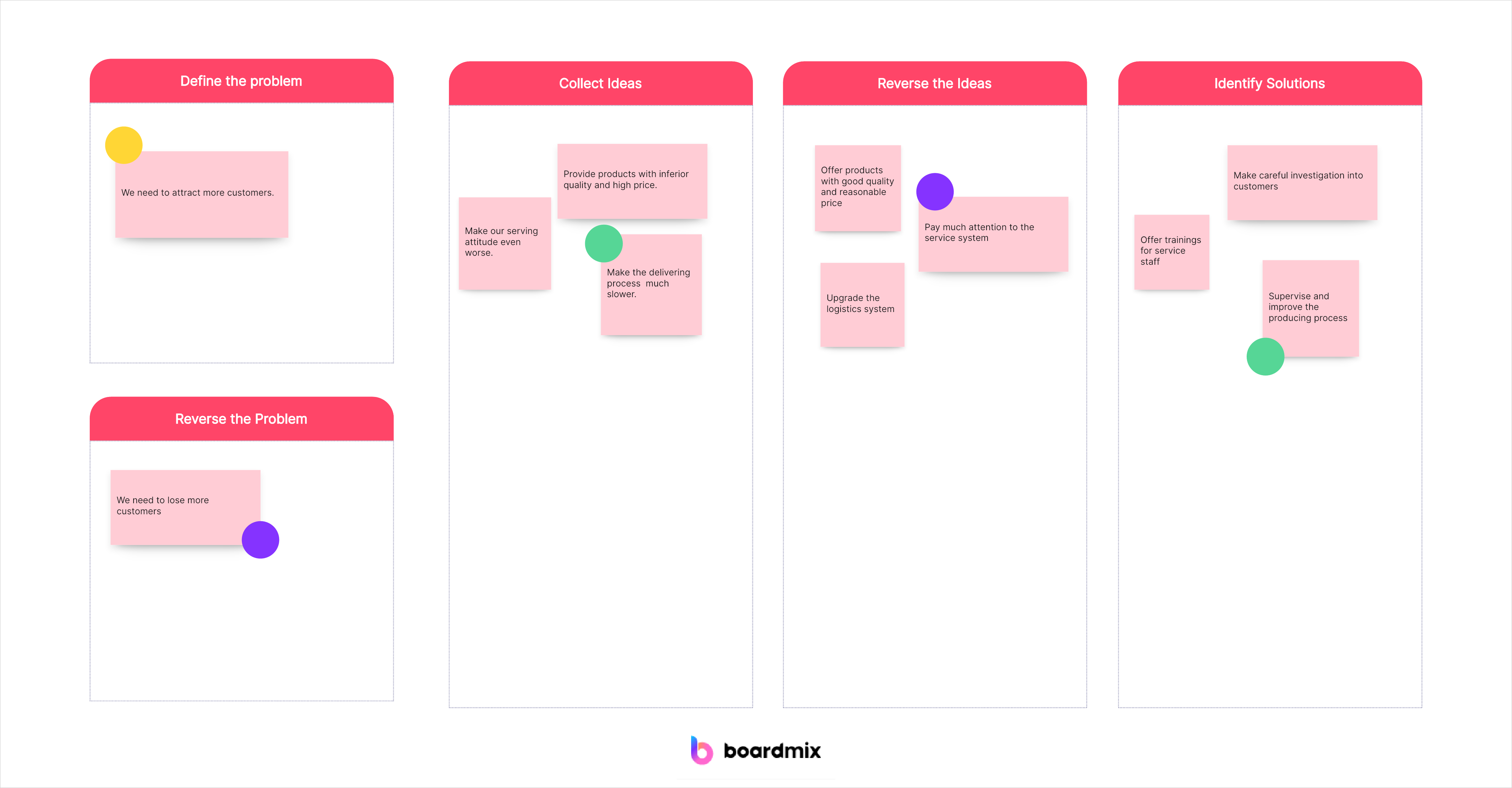Creativity and innovation are essential elements for problem-solving and generating groundbreaking ideas. One unconventional yet highly effective technique in the realm of ideation is "reverse brainstorming." Unlike traditional brainstorming where participants generate ideas to solve a problem, reverse brainstorming flips the process, encouraging the identification of potential causes or exacerbating factors of the problem at hand. In this article, we will explore the concept of reverse brainstorming, its benefits, and how to implement it to unlock new perspectives and creative solutions.
Part 1. What is Reverse Brainstorming
Reverse brainstorming is a technique that challenges individuals or groups to think in the opposite direction of traditional problem-solving methods. Instead of focusing on solutions, participants concentrate on identifying and exploring the root causes or contributors to a problem. This approach helps to uncover hidden assumptions, biases, and obstacles that might otherwise go unnoticed during a standard brainstorming session.

Part 2. Steps of Reverse Brainstorming
Reverse brainstorming is a creative problem-solving technique that involves thinking about ways to cause or exacerbate a problem rather than solve it. The goal is to encourage unconventional thinking and generate innovative solutions by approaching the problem from a different perspective. Here's a general process for reverse brainstorming:

Step 1. Define the Problem: Begin by clearly defining the problem or challenge you want to address. This should be a specific issue or goal that requires innovative solutions.
Step 2. Reverse the Question: Instead of asking, "How can we solve this problem?" rephrase the question to focus on the causes or reasons behind the problem. For example, if the problem is declining sales, ask, "What factors are contributing to our declining sales?"
Step 3. Generate Ideas: Encourage participants to generate as many ideas as possible related to the identified causes or contributors. This could involve listing potential problems, obstacles, or elements that may be exacerbating the issue.
Step 4. Analyze and Reframe: After collecting a diverse range of ideas, analyze each one to understand its implications. This step involves reframing these negative elements into positive opportunities for solution generation.
Step 5. Traditional Brainstorming: Finally, transition back to traditional brainstorming to develop innovative solutions based on the insights gained from the reverse brainstorming phase. Now armed with a deeper understanding of the problem's root causes, participants can generate more targeted and effective solutions.
Part 3. Easily Conduct Reverse Brainstorming with Boardmix
Boardmix, an innovative online whiteboard tool, is designed to revolutionize the way you approach reverse brainstorming. With our extensive range of drawing templates, Boardmix allows you to visualize problems and solutions in a unique and interactive way. Whether you're trying to identify potential issues before they arise or seeking creative solutions to existing challenges, Boardmix's intuitive interface and collaborative features make it easy for teams to engage in effective reverse brainstorming sessions. Unlike traditional methods, with Boardmix, you can capture ideas in real-time, streamline communication, and foster a culture of innovation.

Key features of Boardmix:
- Interactive Drawing Templates: Boardmix offers a wide range of customizable drawing templates that make it easy to visualize and share ideas during brainstorming sessions.
- Real-Time Collaboration: With Boardmix, teams can collaborate in real-time, allowing for immediate feedback and seamless communication.
- Intuitive Interface: Boardmix's user-friendly interface ensures that anyone can start using the tool with minimal learning curve, making it accessible for all team members.
- Innovation-Fostering Environment: By providing a platform for visualizing problems and solutions, Boardmix fosters an environment that encourages innovative thinking and problem-solving.
- Streamlined Communication: Boardmix eliminates the need for back-and-forth emails by allowing teams to communicate and share ideas directly on the board.
Part 4. What Are the Pros and Cons of Reverse Brainstorming?
Reverse brainstorming can be a valuable technique for generating creative solutions, but like any method, it has its pros and cons. Here's an overview:
Pros of Reverse Brainstorming:
Creative Thinking: It encourages thinking outside the box by prompting individuals to approach a problem from unconventional angles.
Breaking Mental Barriers: It helps break down mental barriers that may limit traditional problem-solving approaches, fostering a more open and innovative mindset.
Unique Solutions: Reverse brainstorming often leads to unique and unexpected solutions that may not have been considered through traditional brainstorming methods.
Stimulates Collaboration: The process encourages team collaboration, as members can build on each other's ideas and create a more dynamic brainstorming environment.
Preventing Groupthink: By deliberately looking for ways to make the problem worse, it can help avoid groupthink and promote diverse thinking within a team.
Engagement and Energy: The unconventional nature of reverse brainstorming can inject energy and enthusiasm into the problem-solving process, making it more engaging for participants.
Cons of Reverse Brainstorming:
Initial Resistance: Participants may initially find it challenging to shift their mindset and think about worsening the problem, especially if they are accustomed to more traditional brainstorming methods.
Idea Quality: Some of the generated reverse ideas may be impractical, unrealistic, or difficult to translate into viable solutions. It requires additional effort to refine and adapt these ideas.
Time-Consuming: The process of reverse brainstorming can take more time than traditional brainstorming because participants may need extra time to adjust to the unconventional approach.
Complexity: For complex problems, the reverse brainstorming process may lead to a large number of ideas that need careful evaluation, which can be time-consuming and overwhelming.
Not Suitable for Every Situation: Reverse brainstorming may not be suitable for all types of problems. Some problems may require a more straightforward and direct approach.
Lack of Focus: In the pursuit of unconventional ideas, there's a risk of losing focus on the original problem. It's essential to bring the process back to addressing the core issue.
Despite these potential drawbacks, reverse brainstorming can be a powerful tool when used in the right context and with a clear understanding of its limitations. Combining it with other problem-solving techniques can enhance its effectiveness.
Part 5. When to Use Reverse Brainstorming?
Reverse brainstorming is a creative problem-solving technique that can be particularly effective in certain situations. Here are some scenarios in which reverse brainstorming may be a useful approach:
Stuck in a Creative Rut: When a team or individual is struggling to come up with new and innovative ideas, reverse brainstorming can break the monotony and stimulate creative thinking.
Overcoming Mental Blocks: When there's a mental block or resistance to exploring unconventional solutions, reverse brainstorming can help by encouraging participants to think in the opposite direction.
Addressing a Persistent Problem: If a problem has persisted despite multiple attempts to solve it using traditional methods, reverse brainstorming can provide a fresh perspective and uncover new potential solutions.
Encouraging Divergent Thinking: When the goal is to encourage divergent thinking and explore a wide range of possibilities, reverse brainstorming can help generate a variety of ideas by deliberately considering ways to make the problem worse.
Challenging Assumptions: When assumptions about a problem are hindering progress, reverse brainstorming can challenge those assumptions and prompt participants to consider alternative perspectives.
It's important to note that reverse brainstorming may not be suitable for every situation, and its effectiveness depends on factors such as the nature of the problem, the willingness of participants to embrace unconventional thinking, and the overall goals of the problem-solving process. Combining reverse brainstorming with other techniques can also enhance its utility.
Conclusion
Reverse brainstorming is a powerful tool for organizations and individuals seeking to enhance their creative problem-solving abilities. By flipping the traditional brainstorming process and focusing on the causes of a problem, rather than the solutions, this technique opens up new avenues for exploration, encouraging innovative thinking and fostering a culture of creativity. As we continue to face complex challenges in various fields, incorporating reverse brainstorming into our ideation processes can be a key driver for finding novel and effective solutions.
Experience a new way of problem-solving with Boardmix's innovative approach to reverse brainstorming. With our interactive drawing templates and real-time collaboration features, you can visualize problems, generate creative solutions, and streamline communication within your team. Don't just take our word for it - try Boardmix today and revolutionize the way you brainstorm.








